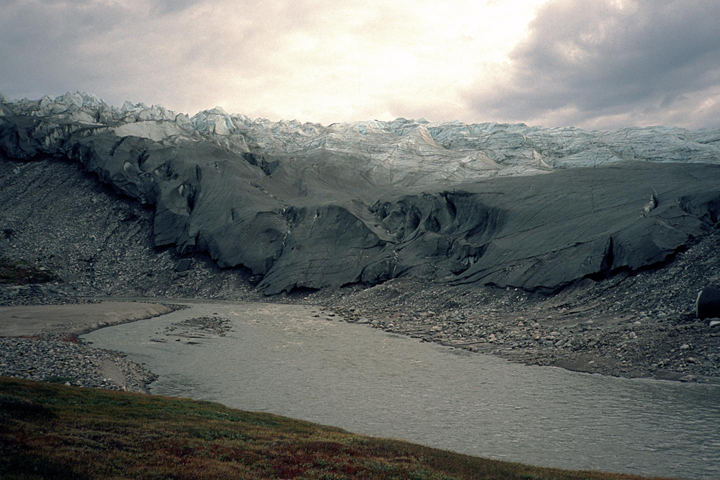A new study has found that, in 2015, the jet stream reached further north than ever before, linking it to a record summer ice melt in Greenland.

The Arctic is warming faster than any other place on Earth, and climatologists expect to see the effects of this, called Arctic amplification.
Essentially, the Arctic is on a feedback loop: the warmer it is, the more ice melts. The more ice melts, the warmer it gets. This occurs because ice reflects the sun’s radiation back into space. But with melting ice, the open waters — darker — absorb more of the heat.
READ MORE: Arctic sea ice at record winter low for second year in a row
While Arctic amplification is known, how this warming effects the atmosphere is somewhat unclear.
One theory is that the smaller temperature difference between the Arctic and the northern latitudes will force the jet stream — a fast-moving stream of air that typically moves from west to east in the upper atmosphere — to slow. That slowing will eventually create more defined swings in the jet stream, and allow warmer, more moist air to move northward.
And that’s what the researchers believe occurred in June 2015.
READ MORE: Greenland ice sheet is melting incredibly early, concerning scientists
“If loss of sea ice is driving changes in the jet stream, the jet stream is changing Greenland, and this, in turn, has an impact on the Arctic system as well as the climate,” said Marco Tedesco, research professor at Columbia University’s Lamont-Doherty Earth Observatory and adjunct scientist at NASA Goddard Institute for Space Studies. He is also the lead author of the study.
The jet stream pushed to 76 degrees north latitude, almost two degrees further than the last record, set in July 2009.
By July 2015, the ice melt in Greenland “exceeded more than half of the ice sheet,” according to the NOAA’s Arctic report card compiled by Tedesco and his team. It was the first time since 2012 that such an excessive melt was recorded.
The melt began in June when a ridge of high-pressure brought clear skies and warm weather to northern Greenland. This, in turn, set records for surface temperature in the region and meltwater runoff. Because of the warmer temperatures and runoff, this led to less reflectivity helping drive the warmer temperatures.
Records were also set when it came to winds. Typically, the winds blow west to east in the region. Instead, on average, they blew east to west.
Greenland’s ice sheet is the second-largest after that of Antarctica. If it were to completely melt it would rise the average sea level by six metres.



Comments